Yashwantrao Chavan Maharashtra Open University 2008 M.B.A Human Resource Management 2nd Year HR Set - Question Paper
2nd Year HR ques. Paper Set

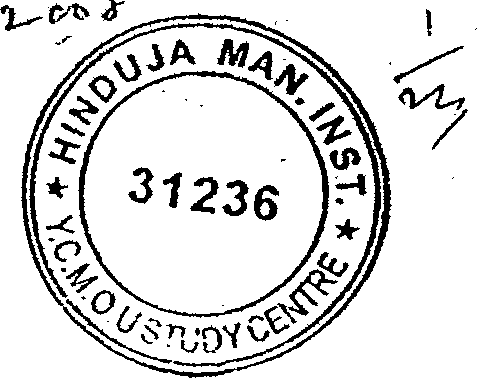
. Organisational Change and Development Time : Three Honrs Marks : 100
Instructions to Candidates:
1) There are two sections.
2) Section I carries 60 marks and Section II carries 40 marks.
3) Attempt any four questions from Section I. In Section II, the Case Study question is compulsory.
4) Figures to the right indicate full marks.
5) Answers to the two sections should be written in one and the same answer book.
1. Discuss the various types of change. Explain the various steps to 15 manage change.
2. Define organisational culture. How does it differ from social culture ? 15
3. What are the important concepts of organisational development ? 15
4. Define innovation process. Explain the various steps. 15
5. Discuss the mechanism for organisational learning. 15
6. Discuss the various elements of the knowledge management process. 15
SECTION II
7. Case Study 40
The Pennathur Tyre Company (PTC) "was incorporated as a partnership firm in 1986 to fill what one of jts partners, Mr. Mani, called a void that existed in South India. According to Mr. Mani, who had worked for a foreign tyre company for nearly fifteen years, there was no company that really had, as its major aim, the production of
N-573
(P.T.O)
P09/HR230I/EE/200811 :1
tyres at minimum cost and their sale to customers at affordable prices. Mani was often heard saying, Four-wheel vehicle owners pay through their nose for tyres, petrol and repairs. Anybody who owns a car spends at least 35-40 per cent of his salary ob its maintenance and that is not how it should be. Mr. Mani started PTC in partnership.with two close friends who had also had extensive experience in the tyre business, working for other companies. Mr. Mani was very actively involved in the business and was at work every day at the crack of dawn and never left the office before 8 p.m. Sometimes when work was heavy, Mani would stay as late as 10 p.m. at the shop. One of the other two partners owned another business as well as was, for 'all practical purposes, a sleeping partner in this firm, and the third partner was much less involved in the day-to-day operations of the company than Mr. Mani.
PTC, though a small partnership firm, had enormous backing from the business community because of their appreciation of the goals of the company and the extreme dedication of Mr. Mani. Thus, PTC was off to a good start. Being very cost conscious, PTC set up a small cost analysis department. As business began to expand, more customer services were added and the company attained an excellent reputation for its wheel-balancing service. As a result, the company was given sole dealership for helmets as well. In 1988, just two years after its incorporation, the company had to expand its premises, operations and personnel. With the expansion came growing pains and Mr. Mani and the two partners had to encounter many small hurdles. Even as they were trying to solve one problem, several others seemed to crop up. Mr. Mani highlighted some of the more serious ones and described them as follows. Dr Sekaran, sometimes I wish we had never expanded our business. When we were merely selling, all were happy. At first, it was exciting to expand the business and services to our customers. As our staff size increased, we began to lose control. Often, the customers are not served as well as they could be. The personal touch that we wanted to establish has not seemed to work; the workers seem to be more concerned about their own inter-departmental problems and fights. For instance, last week while a customer was waiting patiently, the mechanic who was to have changed the oii arid filter in his car was arguing for more tha n half an hour with another mechanic. I was about to give the mechanic piece of my mind, when my partner took the mechanic aside and talked to him. The fart that customers are not serviced without delays, bothers me. T wonder if it bothers my partners as well. I have-not discussed these issues with them since I dont want them to th'nk that 1 am getting unduly worried about small matters.
'Another potential problem lies in the way some of the employees come across to the others in the company. For instance, we have a rather brash young engineer. He is thoroughly knowledgeable about his work and is extremely productive, but he always wears a serious look on his face and talks in a very abrupt, and sometimes, abrasive manner. Some of his mechanics have told me that they are scared of him. I have a set of capable workmen and dont want to lose any of them. I am at a loss as to how to handle this particular situation. I guess if I happened to work for this engineer, I would also be scared of him; but he is really a nice person, you know. The only Droblem is that he is too intense and comes across to others as a grouch. We have a few others who are just opposite, laughing and joking all the time, and I sometimes wonder if their workers take them seriously at all !
Sometimes else also bothers me. Ultimately, I would like to see each of the service departments as individual profit centres and share the additional profits with the workers. That, of course, is down the road; perhaps three to five years from now. I am thinking that if the employees have a stake in the profits they will work harder and I shall not have to put in so much time supervising them. But then, they should all learn to work well together so that there is more collaboration and joint problem solving rather than competition and dysfunctional conflicts. I would like them all to see themselves as one big family where everybody works together harmoniously to reap the full benefits. If, somehow, we can develop the.spirit of friendship and cooperation, it would be great! Maybe, I am rambling too much, but these and similar issues keep bothering me. And I was wondering if you have any advice for me on how I should handle some of these issues.
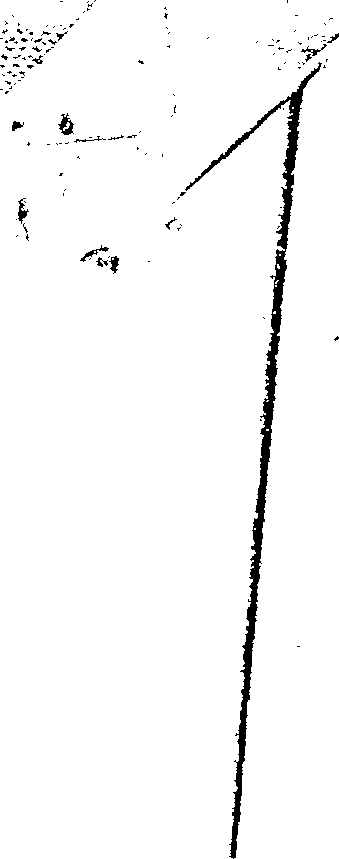
Assuming that diagnostic surveys do indeed confirm Mr. Manis statements, you are required to :
a) Clearly identify the problem in the case.
10
b) Recommend appropriate OD intervention strategies to resolve 15 each of the issues.
c) Explain in detail why you make the particular recommendation and how it would resalve the oroblem,.
15


-*
P09/HR2302/EE/200811 Human Resource Planning Time : Three Hours Marks : 100
Instructions to Candidates :

1) There are two sections.
2) -Section I carries 60 marks and Section II carries 40 marks':
3) Attempt any four questions from Section I. In Section II, the two Case Study questions are compulsory.
4) Figures to die right indicate full marks.
5) Answers to the two sections should be written in one and the same answer book.
SECTION I
1. What is performance aporaisal ? Describe in detail, the process of 15 performance appraisal.
2. /faxaX do you mean by the term skills ? Discuss the need for multi- 15
skilling in modem organizations.
3. Define transfer. What are the different types of transfers effected in 15 organizations ?
What is recruitment ? Discuss the various sources of manpower supply 15 for an organization.
Y5/ efine the term training. Discuss the importance and benefits of 15
training.
What is a policy ? What are the major characteristics of a sound policy ? 15 What are the different types of HR policies ?
ABN Business School, Mangalore (ABNBS) is one of the best B-schools in this part of the country. Many large enterprises like Compaq, TCS, Infosys, NIIT, SAIL, TISCO, ABN Amro, MRF etc. visit the campus for recruitment. ABNBS believes that for successful performance, its students depended on their abilities. They have a conventional orientation, the specific orientation will largely determine which job the student will ultimately get.
The placement officer of ABNBS was in for a shock, when she heard from one of the most reputed recruiter companies that had come to the campus several times and required a large member of students, that they no longer look at the core activity of selecting people for the organization but instead give more importance to soft skills like interpersonal skills, team abilities and analytic problem-solving skills. Besides these soft skills, the company also looks at the candidates willingness to relocate, fit with corporate culture and retention probability while selecting a prospective B-school graduate. According to the recruiter organization, the most vital skills for the job-market in the ascending order are technical skills, communication skills, job experience, networking / relationship-building experience; management skills, industry expertise and sales and marketing skills. The Dean of the B-school is worried. He says We believed that if you wanted to be an accounts manager or credit manager or a HR executive, your ability on the job will largely determine which occupation you ultimately get. But all of a sudden, certain recruiters have come up multi-skilling requirements.
Questions :
a) Why do recruiters look for soft skills in B-school graduates ? What in your opinion, make these skills necessary in todays setup ?
b) Discuss the need for B-school graduates to take up multi-skilling initiatives to better their chances of being selected in campus recruitment.
c) What steps should ABNBS take to make the institution a preferred destination for recruiters ?
Diana was at the office of her dentist. She had to wait for at least 30 minutes before her turn came. To pass the time she picked up a magazine.
In the magazine she found a very good article entitled Where Good Ideas Really Come Fi om. The major theme of the article was that the best ideas for improvement were most likely to come from the rank-and-file employees and not managers. The article went onto describe the various ways of getting these ideas flowing upwards so that they could be used to improve the organization. The article proposed that a special suggestion box' be placed in the strategic place around the organization with blank forms for employees to describe their ideas for improvement. Diana, the managing director, of Diatech Ltd., held discussions with several of her senior managers. It was agreed to implement the programme. Several specially designed boxes were placed in various areas around the company and employees were requested through circulars about the implementation of the suggestion scheme.
Diana anxiously awaited the first batch of suggestions. After the first week, the personnel manager brought them in. There were three suggestions.
One suggestion was that the suggestion box be scrapped.
The second suggestion was for Diana requesting her to get married so that during the nights she will have some work to do and will not have idle time to think about stupid suggestions.
The third was an obscene note to Diana asking her to keep C... open so that good suggestions could be directly put in.
Question :
a) What is theme of this story ? 5
b) What is wrong or right in the story ? 5
c) Analyse the case as per your opinion and give proper suggestions. 10
Human Resource Development
Time : Three Hours
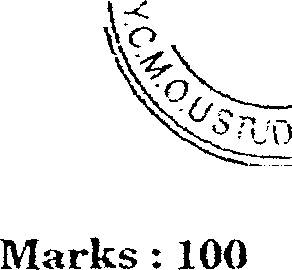
Instructions to Candidates:
|
1) |
There are two sections. |
|
2) |
Section I carries 60 marks and Section II carries 40 marks. |
|
3) |
Attempt any four questions from Section I. In Section II, the two |
|
Case Study questions are compulsory. | |
|
4>. |
Figures to the right indicate full marks* |
|
5) |
Answers to the two sections should be written in one and the same |
|
answer book. | |
|
SECTION I | |
What is career planning ? Discuss the aims and objectives of career 15 planning and process of career planning.
1.
2.
3.
4.
5.
6.
Define training and briefly discuss the various methods of imparting 15 training.
State the provisions of the Factories Act, 1948 with regards to the 15 health and safety of workers.
Define the term learning and briefly discuss reinforcement, punishment 15 and extinction.
What are the major reasons for which individuals resist change ? How 15 can organizations deal with resistance ?
What is rationale behind HRD for workers ? Briefly discuss the need 15 for counselling and the different types of counselling.
Mangala Agrotech Ltd. is in the business of manufacturing and marketing automobile components. The main problems faced by the company are sagging employee moral; low productivity and an accumulated loss of Rs. 50 crore. Looking at this deteriorating trend, the management decided to hire the services of a new CEO, Mr. Arun Dsouza. Mr. Dsouza is a hard core operations man with thirty years of professional credibility to his standing. He worked in large automobile plants in Goa in various capacities like Manager production, GM production, and so on. After taking charge he called a meeting of the senior management and representatives of workers. Mr. Dsouza believed in creating a new work culture for the organization through various HRD mechanisms and instruments for developing people, raising their morale with commitment, care and training. In other words, he wanted to tackle the main problem through the HRD mechanism.
Answer the following questions :
a) What strategies could the CEO employ to help the organisation tackle its main problem of sagging employee morale and low productivity ?
b) What more in your opinion could the CEO have done to strengthen the HRD strategies ?
Case 2
A small software development company with around fifty employees was having problems attracting new staff to work for them. They knew that the_y could not afford to pay people more, but wanted to increase the number of people who applied for vacancies and decrease staff turnover which had been steadily increasing. The company had taken on a number of new staff in the past year. Most of the staff was recruited in campus interviews from local colleges. In order to retain staff, the company usually took the marks card and degree certificate from the new recruit and held them till they were in the .service of the organization. The management was conscious that this practice was illegal and subject to legal challenge
The management appointed on HR Manager !< see what rete.Ui >n strategies could be enveloped Worganization. Tin? iur.viy-j*ppointea
HR Manager visited the employees to see how they felt about having formal policies in place of ad-hoc system that the organization had been using uptill now. A research in the local labour market found that there was considerable competition in that area for workers. It was found that, through word of mouth, employees conveyed to their juniors in college that they were stuck in this company which was not paying well, and was retaining employees by force and that they should not fall into the same trap by accepting employment in this company.
Questions :
a) Suggest ways and means of improving the image of the organisation in the eyes of the new prospective employees.
10
10
b) What retention strategies would you suggest to the company to retain the existing workforce ?


Labour Laws for Managers
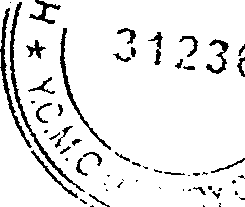 |
|
Marks : 100 |
Time : Three Hours
Instructions to Candidates:
1) There are two sections.
2) Section I carries 60 marks and Section II carries 40 marks.
3) There are six questions in Section I out of which any four are to be attempted.
4) In Section II, all questions are compulsory.
5) Figures to the right indicate full marks.
6) Answers to the two sections should be written in one and the same answer book.
7)- Use of calculators is allowed.
SECTION I
1. Discuss the concept of industrial relations. Explain the difficulties in 15 the healthy growth of industrial relations in India.
2. Enumerate the unfair labour practices on the part of employers and 15 the trade union of employers.
15
3. Explain the powers and duties of conciliation authorities.
15
4. Define strike. What are the different forms of strikes ?
5. Define lay-off and retrenchment. Discuss the nature of lay-off and 15 retrenchment.
6. Explain the concept of workers participation in management. What 15 are the functions of a shop council ?

P09/HR2304/E E/200811 : 1
N-576
(P.T.O)
7. J J Hospital, Bombay fun by state of Bombay retrenched two of its 20 ward servants- On behalf of the servants, their trade union filed a writ petition in the High Court for their reinstatement. The management, i.e. the state of Bombay contended that the hospital being not an industry, the Industrial Dispute Act, 1947 was not applicable. -
Decide whether the hospital in the above case is an industry, stating
reasons.
8. In an Electricity Board, an employee, Mr. Sharma, was working as a 20 Muster-Roll Labourer. While in employment, he allegedly assaulted a superior officer in the presence of other employees with a tension screw on his back and nose, which resulted in a fracture of the nose and severe bleeding. This incident was followed by unauthorised absence by Mr. Sharma for several days. The Electricity Board, after holding a domestic enquiry, terminated the services of Mr. Sharma. Mr. Sharma raised an industrial dispute. The appropriate government referred the dispute to the court for adjudication. Mr. Sharma, further moved to the High Court.
Decide whether the termination of services is justified, stating reasons.
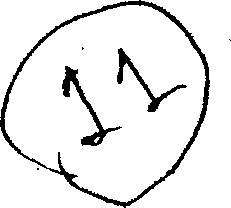
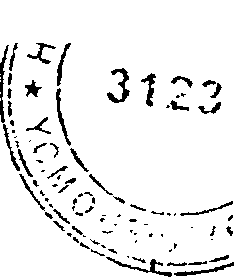
Managing Interpersonal and Group Processes Time : Three Hours Marks : 100
Instructions to Candidates :
1) There are two sections.
2) Section I carries 60 marks and Section II carries 40 marks.
3) There are six questions in Section I out of which any four are to be attempted.
4) In Section II, the Case Study question is compulsory.
5) Figures to the nght indicate full marks.
6) Answers to the two sections should be written in one and the same answer book.
SECTION I
1. Explain the characteristics of groups. 15
2. What are the major external and internal forces of change in an 15 organisation ?
3. What are the elements of communication ? Explain the process of 15 communication.
4. What are the individual and organizational influences on creativity ? 15
5. What are the five types of power according to French and Raven ? 15 What are the effects of these types of power ?
6. Describe the seven dimensions of organizational culture. 15
N-577
 |
|
P09/HR2305/EE/200811 : 1 |
(P.T.O)
X watches is a joint sector company promoted by a leading business house and a state government. The plant was set up 45 kms away from Bangalore. The company is known for its professional work culture and very attractive remuneration packages. When the plant was set-up five years ago, the management was able to attract many senior and middle level managers and operators from a reputed public sector company, also manufacturing watches.
For its tool room, X watches poached on a well known tool room and training centre and weaned away a couple of managers and tool makers. Key posts of the plant, however, were held by personnel drawn from other owned group companies. The group had its plants in all parts of India, except in the South. X is the first to be established in the south of the Vindhyas.
X watches, therefore, had a mixed group of personnel hailing from public sector, tool room, (operating in South India) and the groups top ranking executives (who came to Sou*h India for the first time). Added to this was the workers who were from all localities. After six months, an all-around disillusionment had set in and everyone was cursing himself for quitting his or her previous job and joining X watches.
Questions.:
a) List out the cross-cultural under currents in the above case 10 incident.
b) How do you bring about homogeneity in the above situation ? 15
c) Discuss the case incident under the following culture maintenance 15 factors :
i) Selection
ii) Top management practices
iii) Socialisation process.
P09/HR2305/EE/20081I : 2
P09/HR2306/EE/200811 Industrial Relations
Time: Three Hours
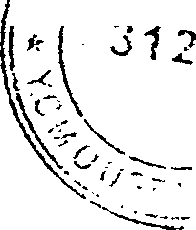 |
|
Marks : 100 |
Instructions to Candidates:
1) There are two sections.
2) Section I carries 60 marks and Section II carries 40 marks.
3) There are six questions in Section I out of which any four are to be
attempted.
4) In Section II, the Case Study question is compulsory.
5) Figures to the right indicate full marks.
6) Answers to the two sections should be written in one and the same answer book.
SECTION I
1. Explain in detail, the concept of Industrial Relations. 15
2. Discuss the provisions relating to the code of discipline in an industry. 15
3. Explain the provisions relating to the Industrial Disputes Act, 1947. 15
4. What is the role of collective bargaining in the management of conflict 15 in an industry ?
5. What are the different employee participation strategies ? 15
6. Explain in detail, the factors that, are responsible for the positive 15 employee relations in an organisation.
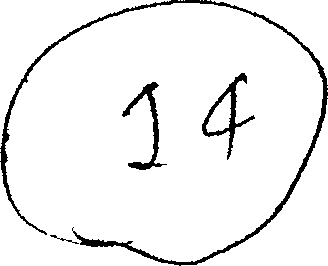
VIdharb Textiles Limited is one of the leading textile mills in Maharashtra, having a work force of more than 1200 employees, engaged in thfc manufacture of cotton yam of differentcounts. The company has a well established distribution network in different parts of the country. It has modernised most of its plants, with a view to improve the productivity and maintain quality. To maintain good human relations in the plants and the organization as a whole, it extended all possible facilities to the employees. Compared to other mills, the employees of 'Vidharb Textiles Ltd. were highly paid.
The Company has a chairman followed by a line of executives in charge of different functional areas. The Industrial Relations Department was headed by the Industrial Relations Manager with supporting staff. Ihe company earned profits every year and distributed reasonable amounts as. bonus to the employees. The employees were represented by three trade unions X, Y. and Z, out of which the first two unions were recognised by the Management for the purposes of negotiation. All the unions maintained good relations with the Management individually aud collectively.
In 1995 when the bonus issue was placed before the management, it had a series of discussions with both recognised unions and finally announced a bonus; which was in turn agreed upon by both the recognised unions. The very next day the management prepared the settlement and presented it before the union representatives. The Chairman of unionX signed the same, the leader of union Y refused to do so and walked out, stating that the amount declared as bonus was not sufficient. The next day, union Y issued a strike notice to the management asking for higher bonus. The management tried its level best to avoid an unpleasant situation, but in vain. As a result, one morning, members of union Y went on strike. They were joined by members of union Z. During the strike the Management could probe the reasons for the indifferent behaviour of leader of union Y. It was reported that leader of union X, soon after the Orst meeting had stated in the presence of a group of workers: because of me the management has agreed to declare this much amount of bonus to the employees. The representative of Y union had miserably failed in its talks with the management for want of initiation and involvement. The observation somehow reached the leader of union Fori the very day it was made, as a result of which he felt insulted. Soon after identifying this as a reason for Ys strike call, the management in the presence of
the Industrial Relations Manager brought about a compromise between the union leaders,Xand Y. Immediately after this meeting, the strikers (members of union Y and Z) had resumed work and the settlement was signed for the same amount of bouns, as was originally agreed upon.
Questions :
$
a) Was the leader of union justified in making remarks that caused 10 offence to the leader-of union Y ?
b) Could the strike have been avoided had the union leader ofX not 10 made his remarks before a group of workers ?
c) What should be the managements long term strategy for ensuring 15 that inter-union rivalries are avoided ?
d) Is that desirable or required ? 5
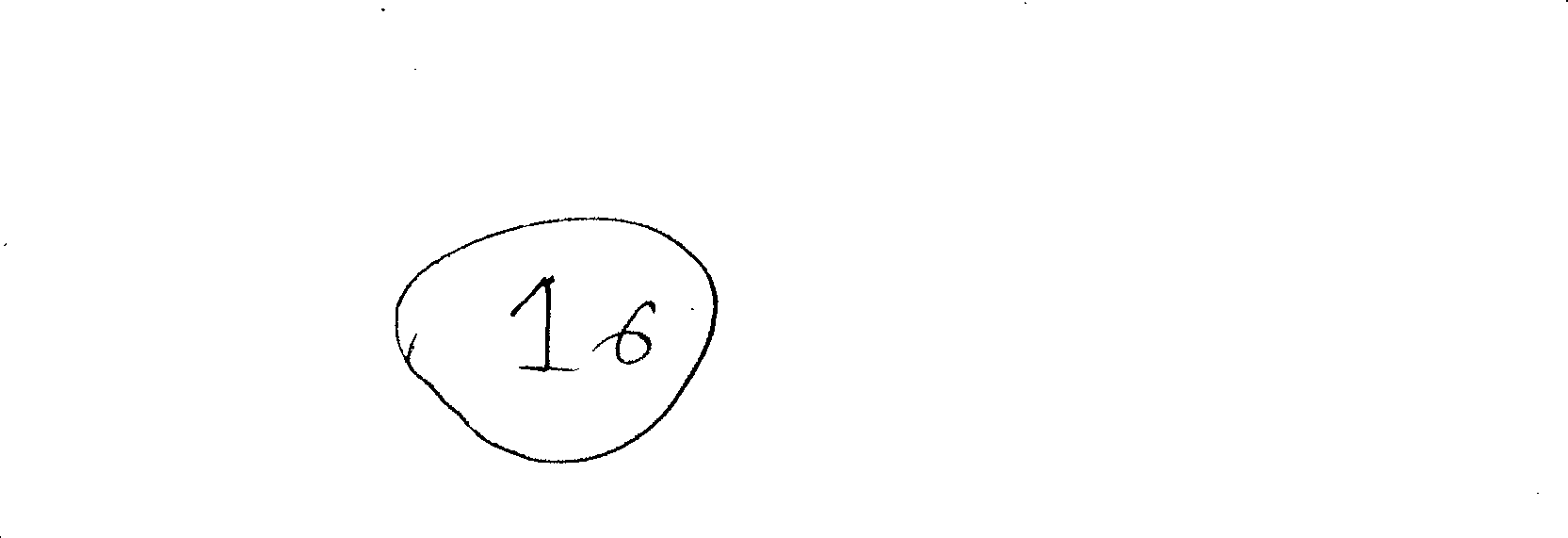


Instructions to Candidates:
1) There are two sections.
2) Section I carries 60 marks and Section II carries 40 marks.
3) There are six questions in Section I out of which any four are to be attempted.
4) In Section II, the Case Study question is compulsory.
5) Figures to the right indicate full marks.
6) Answers to the two sections should be written in one and the same answer book.
SECTION I
1- What is performance management ? Describe the various principles 15 of Performance Management.
2. Describe the various methods of performance appraisal.
15
3. What is mentoring ? Describe various advantages of mentoring.
15
4. What is appraisal interview ? Describe the various types of appraisal 15 interview.
5. What is organisational development ? Describe the various 15 characteristics of operational development.
6. Describe the various types of leadership and the qualities of a leader. 15
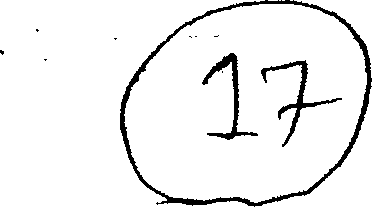
Fran Rogers has always believed that meeting the needs of empioyees required more than simply paying them and offering a slate of employee benefits. She recognized that balancing the realities of ones work, and personal life is difficult, and more importantly, problems that the employees face in their personal lives will ultimately show up in their work performance. She had a first hand experience. Rogers wasnt about to drop her daughter, who suffered from asthma, off in a day care centre.
One of the more critical work-related problems is finding quality child care. Rogers believed that companies had to help their employees in this endeavour or face productivity losses. Helping employees, after all, was the humane thing to do. It was also a way for an organisation to provide an employee benefit that employees desire.
Work / family directions" began in 1983 working with a client organisation, IBM, Rogers attempted to help the organisations employees find quality child care in the Boca Raton, Florida, area. Rogars succeeded and Work Family Directions (WFD) was off and running. Today, the company has grown to several hundred employees and has revenues of $ 100 million, reflecting work done on womens employment issues in more than 20 countries. Its client list now boasts corporations such as Xerox, American Express, the St. Paul companies and the Gap. Interestingly, 9 out of the top 10 100 best companies for working women are WFD clients.
Rogers may have found a secret to one aspect of employee benefits by helping companies recognize that giving something of value to employees can yield many benefits for all involved. Although, she sold her business in 1998 to the Ceridan Corporation, she continues her crusade for organisations to make a significant investment in work and family related issues. She wants the organizations to do more -helping individuals not only with the day care or elder care, but with anything employees deal with over their life cycle.
Questions :
a) How do benefits like those that WFD provides assist organisations in competing for and retaining employees ?
b) Do you believe that providing day care benefits to employees who have children is unfair to the employees who do not have children? Why or why not ?
t ) How can a company ensure providing such benefits nous not favour one group of employees over another ?
International Human Resource Management Time : Three Hours
Instructions to Candidates:
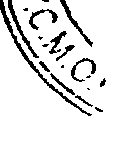
Marks: 100
1) There are two sections.
2) Section I carries 60 marks and Section II carries 40 marks.
3) There are six questions in Section I out of which any four are to be attempted.
4) In Section II, the Case Study question is compulsory.
5) Figures to the right indicate full marks.
6) Answers to the two sections should be written in one and the same answer book.
SECTION I
1. How does domestic HRM differ from international HRM ? 15
2. Enumerate the forces for change in the enduring context of IHRM. 15
3. Discuss in detail the country-level differences in training. Explain. 15
4. What are the objectives of international compensationfrom the various 15 perspectives?
5. As an HR Manager, what are your suggestions to the appraiser of an 15 expatriate ?
6. Explain performance management of Host Country Employees HCEs. 15
One of the most popular tourist attractions in America is Disney World at Orlando in the state of Florida. It is a theme park with numerous attractions and a visit to America is not considered complete without the visit to Disney World. Prior to the opening of Disney World at Orlando, there was a similar theme park near Los Angeles, in the state of California, known as Disneyland. Disneyland was the creation of Walt Disney, a famous family movie maker who had produced such movie hits as Fantasia and Snow White. Disneyland is a family entertainment phenomenon and is also known as Magic Kingdom.
Following Walt Disneys death, the magic kingdom hit a downward trend. The management rested on the past laurels of its success and the organization stagnated into this status quo. It shunned innovation and stayed in its ivory tower away from the pulse of the audience. It became fearful of change and, by all accounts, it was not fully utilizing its potential or its resources and, considering the demand for its products and services, it was "Undercharging for its licensing of cartoon characters and admission to its theme parks.
Michael Eisner, the head of the Disney organization felt that he had to become more like Walt Disney, an innovator and a risk taker who encouraged creativity and who had built the Disney Empire. After analysing the situation carefully, he devised a plan that would encourage openness to change, and a culture of strong creativity, which had always been the hallmark of Disney's success.
Eisner himself came up with a number of new and creative ideas including new health food restaurants and he encouraged and induced creativity among others, and creativity became one of his top priorities. His idea of creating a Euro Disneyland in Paris came into high focus. He met with twelve of the worlds most respected architects in a widely creative session to bring out as best a design as possible for the theme park. He encouraged and rewarded new ideas, opened channels of communication and took the members into confidence by sharing with them his strategic plans and ambitious growth strategies.
One change that came into being was the renovation and expansion of its hotel chains. He ordered an ambitious $ 1.0 billion hotel expansion plan that doubled its room capacity to 20,000 and came at par with the well -known Ritz Carlton chain of hotels.
The movie business that had practically come to a standstill and was hardly reaching a break-even point got a boost of creativity. By
N-580 P09/HR2308/EE/200S11 : 2

tightening budgets without sacrificing quality and working with adventurous scripts and unknown but talented actors, it became a dominant force in the American movie industry and produced such hit films a? Beauty and the Beast, Pretty Woman, Ruthless People and so on.
Michael Eisners creativity, openness, innovation and team spirit has not been without its rewards. From 1984 to 1990, Disneys sales increased from $1.7 billion to almost $6.00 billion. Disney has expanded its family entertainment business to includc book publishing and records and has opened a theme park in Japan.
Michael Eisner made a dramatic turnaround of Disneys fortunes in 1980s. He was even more ambitious during the 1990s and called it the Disney Decade. He surrounded himself with ambitious, energetic and creative staff and he expected a period of extensive growth for Disney operations around the globe. With the fall of closed societies and the advent of instant communications and emphasis on internationalization, he has been very optimistic that Disney will become a household name around the world, as it is in America.
Questions :
a) Why do you think that the Disney organization, once a highly 15 successful and growing organization, became stagnant after the death of its founder, Walt Disney ? Describe as many reasons as possible.
b) How important is Michael Eisners role in the process of 10 turnaround of the company fortunes ? Does it mean that the success of the entire organization depends upon the philosophy
of its CEOs ? Give reasons.
c) List and explain the internal and external forces that necessitated the change in the outlook of Disney operations.


Management 1 cntrol Systems Time : Three Hours Murks- : 100
|
Instructions to Catid (dates : | ||
|
1) |
There are two sue .ion; | |
|
2) |
Section I carrier G1*) marks .> |
>id Section II carries 40 m;i rlu;. |
|
3) |
Attempt cay four quetiot |
! from Section I. |
|
4) |
The case itudy question is |
>mpulsory in Section II. |
|
5) |
Figures tc> the right indient- |
> full marks. |
|
6) |
Answers to the tw > section! Same answer bool1. |
1 should be written in one mid tl-t |
L What are the elements, of an adequate or effective control system ' 15
It. Describe in detail, the yf rai.eidc plmming process. 15-
3. Are managers who use the foodward control system uior j effective 15 than those who do not ? oubmit y 'iir arguraerfc.
4. Will adjusting the cost siand'j.rd in tit levels of aspiration iiriprov;- the 15 motivation of workers perfonninf,: -structured tasks ? Can this be done
in actual work onvironmer.U; ? F.rnlrm.
5. For what reasons would & company l\o.ld a manager responsible for profit 15 when he does not control oil co.'jIm and revenues ? Do you -hink this should ever be done ? -
6. Explain the different ste pa o; proj c.t scheduling, . 15
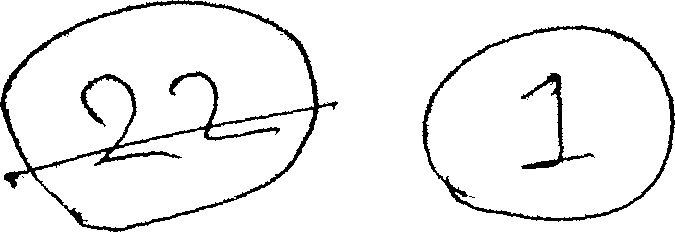
Management of Training and Development Time : Three Hours
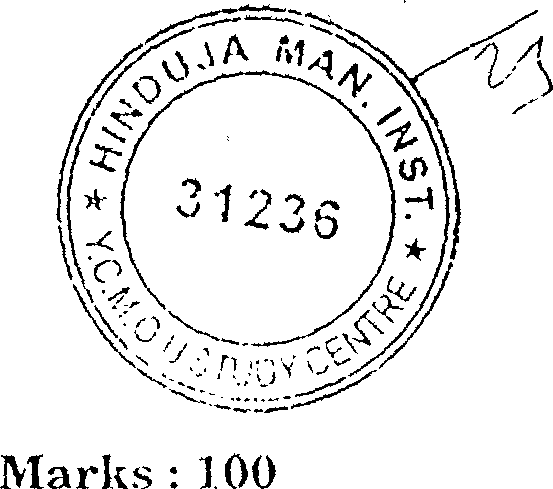
InstructionstoCandidat.es:
1) There are two sections.
2) Section I carries 60 marks and Section II carries 40 marks.
3) There are six questions in Section 1 out of which any four are to be a'tempted.
4) In Section II, the Case Study questions are compulsory.
5) Figures to the right indicate full marks.
6) Answers to the two sections should be written in one and the same answer book.
SECTION I
1. Explain thc> methods oflearning in detail.
15
15
15
15
2. Explain the methods of training.
3. Write an essay about the various meta-thecries of learning.
4. Describe the various alternatives of training and development.
5. What are the different t} pes of communication ? Describe each type 15 briefly.
15
6. Elaborate the Kirpatrick model of evaluation.

Mr. Naveen has been working as a Manager (Crc*iit Appraisal) in the State Bank of India since 1970. He got a first rank in his M.A from the Andhra University in 1969. He rose from Officer Grade IV to Officer Orade I in a short span of 10 years. Personnel records of the bank show that he is an efficient manager in agricultural credit, industrial credit and credit to sinall business etc. The bank is planning to computerise the project appraisal department. In this connection, Mr. Naveen was asked to take training in Computer Operations. But he was quite reluctant to undergo the training.
Questions :
a) Analyse the case..
b) Why was Mr. Naveen reluctant to undergo training ?
B. Mr. Vijay joined the S. C. Railway five years back v.'heii he was
21 years old. He proved himscf as an efficient steam engine driver. He bagged the Railway Minister's'Best Drivers Award this year. He was asked to undergo training in diesel engine driving due; to massivt. dieselisation in the South Central Railways. But he was reluctant t< take up training. The Head'"of the loco staff was quite surprised ti. know the reluctance of Mr. Vijay when a number of drivers'of stean. engines have volunteered themselves to undergo training in diesel engine driving.
Questions :
a) Analyse the case.
b) Identify the psychological problem? in the case.
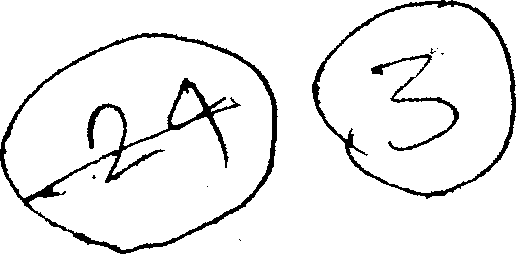
P09/CP2001/EE/2009G521
Strategic Management Time : Three Hours Marks : 100
Instructions to Candidates:
1) , There are two sections.
2) ; Section I carries 60 marks and Section II carries 40 marks.
3) There are 6 questions in Section l out of which any. four are to be attempted.
4) The case study question in Sectic n II is compulsory.'
5) Figures to the rigjit indicate full marks. !
6) Answers to the two sections should be written in one and the same answer book.
4**-----
V , T - . S' V SECTION I . i-. ' ....
Discuss the concept and importance of strategy. jg
2. Describe the different environmental scanning techniques. j 5
3. Explain the various iitrategies that an organisation can use depending 15 on different situations. ,
4. Describe the different typed of qualitati ve factors that affect strategic 15 choice. ,
5. Managing social responsibil ity of a business is like any other aspe ct of 15
managing your business.Comment. 1
Explain the evaluation' .of strategics' ir. non-profit making and 15
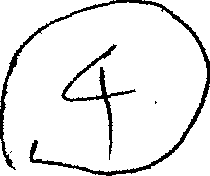
* government organisations.
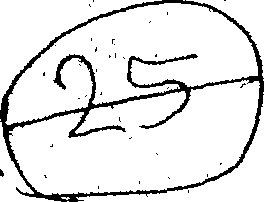
Road the given passage and answer the followingquestions :
Strategic Leadership for Multinationals in fndia
Based on his experiences in Unilever and Pepsico Ind ia, I. M. Sin ha.
the ex-CKO of Pepsi Co India, highlights ten prerequisites for bei ,g a
successful lender in a foreign MNC {Multinational Corporation -
operating in India.
1. MNC leaders in India should reflect the personality of the MNC they work for, never compromising on the values the company : lands for. The values have to be converted into the culture of the organization, where everyone is not only committed f< or believe, in the values, but breathes the culture.
2. MNC leaders in India should carefully understand the India! environment, the policies of the country, the processes and th* needs of the country. For an MNC to be successful in the long ran. the leader must identify the MNC with national priorities, be see;-! to be a part, of the Indian fabric, and put country gain beibr corporate gain.
H -r;MNCleaders, or Indiashtyeld apprecfnte that thee' company i rneiv <o:posed to ti'te media ano ih- poittitafsystei:njiia:i.doii)t-sti orpomfckms a\re.saud mustv .therefore, .saysm-' iea>ir::xuspari a: man ner.
4,/' MNC leaders in India should build a team of high caliber professionals, or lead one if they have inherited su<T a team. This team must take ownership for the vision of the company and it* goals, and must put the corporation b< fore self. Passion to win, e achieve, to enjoy and celebrate team victories, a commitment ; excellence and to the best,; re great binding features.
o. ' MNC leaders in India shouk, demonstrate action, quick decision:, commitment to identifying the core competencies of che;r organization, and working with and improving on t hem, with an ability to adapt to changing business and country enviromrent. They must have a sense of timing, sc i/e opportunities, anticipate future changing demands, and promote investments ahead of demand.
o,e MNC leaders in India must understand the market they operate in. t he dist ri but ion system, tne customer, the retail trade, and most important, ! he from line.
Commitment tc training and development, ensuring the introduction of the latest technologies and processes, and flexibility to t.hange and adapt to the needs of the customer must be the driving force.
Imposing the best practices of the parent company, or even products successful outside India, or even the approach to motivating people, need to be tailored to India. Hence the MNC leaders in India must have a completely open mind.
<K
8.
9.
OP-
MNCs hav e to ensure that corporate image consistently improves, as in a bon lerless world, the image in one country affects the image globally. An MNC leader in India, therefore, has a responsibility, which crosses national boundaries and thus places a greater burden on his/her shoulders.
Finally, a leader in an MNC has.to walk the-talk. If cost-effectiveness and lowest-cost operations is the companys target, the leaders personal lifestyle must reflect simplicity and not ostentation. She/he and the organization must think in rupees and not dollars, and she/lie must (ead the organization to meld with other Indian organizations. F industan Lever is an excellent example - many people consider i v an Indian company, and not the largest. MNC ir India.
Questions ;
A) What should the MNC leaders in India know about the land 10 their company serves ?
gti'
v-f Describe the cost effectiven ess of the MNC leaders in India. 10
Why should the MNC leaders in India demonstrate action ? 10
How might the abo/e three el ements of strategic leadership 10 differ for the MNC leaders in India Vs. leaders of the domestic companies in India ?

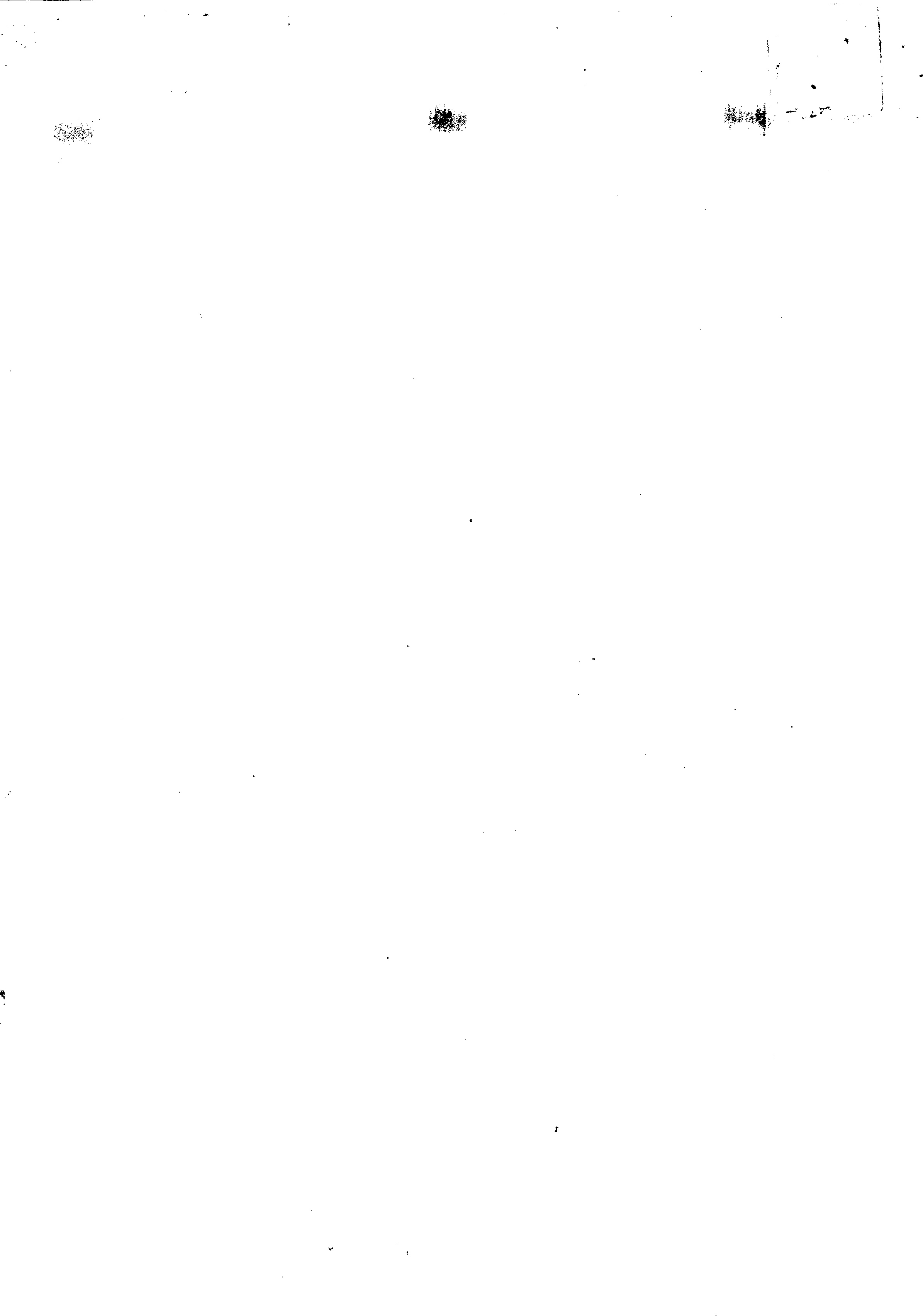
P09/CP2002/E E/200905 22 International Business
Instructions to Candidates :
1) There are two sections.
2) Section I carries 60 marks and Section II carries 40 marks.
3} There are 6 questions in Section I out of which any four are to be
attempted.
4) The case ?tudy questions in Section II are compulsory.
5) Figures to the right indicate full marks.
6; Answers to the two sections should be written in one and the same r nswer book.
1. Define international marketing. State and explain the most relevant 15 factors affecting international marketing.
2. Disci ss the vm ious principles of global finance. 15
3. , Whai do you mean by strategy ? Explain the various tacties for business 15
strategies.
4. Wbat is a merger ? Trace the reason* for mergers and describe the 15 \ / pr j icss of merger?.
5. Ex pla in the concept of global brands. Discuss the various strategies for 15 glc bal brands.
6. Define globalization. State and explain the various drivers of 15 globalisation.
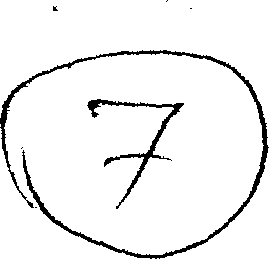
|
s: |  |
ftON II |
7. Analyse the case given below and answer the following juestions.

Case Study - I
Trillon Machinery, France
Trillon Machinery, France is the subsidiary of Trillon Machinery, headquartered in Chicago. The firm-specializes in the production of highly sophisticated material-handling equipment, most of which mu ; be specially designed for the job. There are few competitors in Franr ; or in any other part ofthe European community. Business has been excellent, though recently the company lost twc si 'able orders to tf j French competitor. One customer was the government ownt 1 automobile factory and the other was a French owned textile facto.- .
Both customers had made various purcha ses from T-ilfon Machine: / in the past.
Mr. Thomas, the subsidiarys managing directoi, sat in his offic j reviewing the two lost sales. He knew that the French :ompetito * did not have Trillons technical capability, and he was confident that the competitors price could not have been significantly lower. Thom?- ; walked to the window overlooking the front of the building. He w; > proud of that plant. The lawn was well kept. There was a flagpole rit i the American flag flying, just as in Chicago. Thomas was thinking th. ; he had a good chance for the executive vice presidents job that wr<s coming up soon back at the headquarters ifTrillon Machinery, France, continued to do as well as it had done for the last three years under h, ; management. The loss of two sizable orders wouldnt help his recor , though. What was the reason ? An idea came to bin*. 4e call >1 h s friend, Henri. He explained to Henri that he was concerned abm ; having lost two of his orders. Did Henry know why this hrd happened
After|a pause, Henri said, Thomas my friend, the l oom years in tl i Fran- e are over and the government is concerned The order wa.-earmarked for a French company
Questions :
a) Analyse the business environment of Trillon Machinery, Franc v. XO
b) What can Thomas do to stofo this loss of orders ? 10

Seven months after taking over as President of General Motors Asia Pacfic, Frederick Headerson came for a visit to India ana announced that his dream was to turn the worlds biggest car manufacturer into the biggest car marketer in India
, G.M. India :s a very small player in India right now. It has a plant to produce 25.000 cars, but last fiscal sold only 8,473 cars. It seems to be'.stuck in the slow lane in India.
In what will be a first in the Indian automotive industry, G.M. plans to i se its 21-year-old global alliance with Suzuki, and a more rec in one with Fiat to move into gear. What helps is that G. M. owns 20c:h stake in both the companies. Comb: ned in India, their purchasing wih soar over Rs. 00 Cr a year, the dealership and service network will jump to 360, and make it an allia nce with the widest range of passenger cars.
Apparently, the idea is to create an Indian version of the Global '| Alii, nee that the throe already have. They can now develop new \ pro * ucts, fell each others cars in the vari cms market source components %_ tog idler and even enter into joint ventures. In India, the alliance will forai on the companies sharing each others products, buying ,r, components together in order to cut both components and sourcing costs, woking on the engines and transmissions together, and entering into cro,-s branding agreements.
The Indian Automobile Industry is in for a big change. Under the nev scheme of things, three players out of 12 players would, for all practical purposes, play the game as or e. The Alliance could bring to India the Worlds largest car makers vast portfolio of brands. And the volume.* of Maruti will give .he alliance the leeway with vendors to source components cheap and expand markets through Marutis wide network.
Fiat can help Maruti with its quest for diesel engines for cars.
G.M, and Fiat autc plan to invest $ 100 million at Fiats Ranjangaon facility i i order to produce new models and powertrains. The EQUALLY OWNED joint venture, detai's of which arc being worked out, could also become a global source of powertrains for small and mid-sized cars.
There is little reason to doubt the partnership rolling in India. The Aaia-Paeific region i$ after all, the fastest growing car market.
Ravi Khanna, country President .and M.D., Delphi Automotive


Systems (INDIA) said, Globally, the auto industry is now more agiln as a result of consolidation. In India, circumstances may be peculif r or unique. But the pattern can be seen quite clearly
1. Analyse the case from the globalisation point of v:Vw. 8
2. What opportunities do you see for Indian companies in H'i ; 6 alliance ?
3. How do you think other M;STCs in this market will/should rea c 6 to this development ?
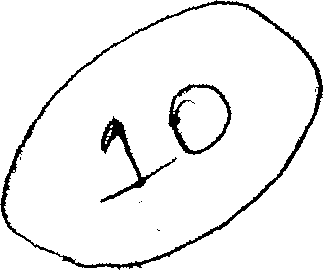
P09/CP2004/EE/20090524
Management Control Systems Time : Three Hours Marks : 100
Instructions to Candidates :
1) There are two sections.
2) Sec'idr I carries 60 marks arid Section II carries 40 marks.
3) Then:; are 6 questions in Sect;on I out of which any four arete be attempted.
4' The c; so study questionin Section II is compulsory.
5) -Fig'.ires to the right indicate full marks.
6) Answers to,.the two sections should be written in one and the same
answei book.
SECTION I
1. Ex pi air the < oncept of management control and discuss the necessity 15
V"' of such control.
2. Describe the need for strategic plapning in management control.
15
3. Can a MB J he lsed to reduce slack and'improve resource allocation ? 15 V" Justify.
4. Define an adaptive control system and explain system evaluation and x5 adaptatie .
Explain how ran ErlP help in management control information
15
S. . How man ways are there t:> control behaviour in an organisation ? 15 'S How does one choose the ones that are best ?


Read the given ease and answer the questions that follow :
Mr. Nair was recently promoted to the post of a control mr aager from his previous position of an operation manager. In hianew position, he needed a bright manager to serve as a deputy to assist in ca. rying out his day-to-day controlling and co-ordinating activities. Then- were three candidates available who could be pron :>ted to the position of Mr. Nairs deputy.
Ah three candidates had exceptional academic backgroun and successful careers with the company. Mr. Murthy was with the company for 5 years. He had an engineering degree with MBA from Symbiosis International University. He was real achiever. Mr. Murthy performed every assigned task quickly and efficiently. He was well inform jd on the effective control system. He got along well with others His performance was best where he had total control of the situation.
. , . . Mr. Sadasivam, on the other hand, had no engineering dog-ee or MBA, but with his IS.Com degree had been with company for 20 years.
He (injoyed working with most key nanagers. Hts organisa/onal experience was a tremendous asset. Mr. Sadasivam was not aggressive and used to be cool in a difficult time. He disliked direct confrontation and disagreement with any employee of the company.
\ Mrs. Swati was the third candidate who had r< cently joined the company. She had a Ph.l). in quantitative aids to decision makin ; from Madras University and had an IT background. Her oerformance i i her previous job was exceptional. She is not much aware about the company bi t she seemed to gel along well with oi hers. She is .eserved but sows g:1 -at understanding of management control.
Questions:
a); Assume that you are Mr. Nair, how would .you selec.. y >ur new 20 deputy from the three candidates ?
b) I (you intend to conduct additional interviews with each cat >di< late, 20 what questions will you ak to assist in controlling and co-ordinaling the process ?

P09/CP2003/EE/20090523
Business Ethics and Corporate Governance Time : Tb?*ee Hours Marks : 100
Instructions to Candidates :
1) There are two sections.
2) Section I carries 60 marks and Section II carries 40 marks.
3) .'here are G questions in Section I out of which any four are t-> be . ttempted.
he case study question in Section Ii is compulsory.
5) igures to the right indicate full marks.
6) Answets to the two sections should be written in one and the same answer book.
SECTION I
1. What is the concept of' social responsibility ? Explain the points that 15
\s''} support and are against the social responsibility.
2. Explain the ethical issues in the field of advertising and take-overs 15 and mergers.
3. State and explain the frameworks for ethical decision making. 15
4. What is meant by corporate goarnance ? Explain the various skills 15
required by the manager in corporate governance.
5. What do you mean by the Cadbury code ? Explain the negative bilateral 15 and negative probaistic concept in the Cadbury code.
6. What is risk management ? Explain the various types of riskh- in 15 project- m;' nagement.

WorldCom Whist]eb 1 ovvet
In March 2002, when WorldCom was struggling to co-ordinate? and integrate the complex moss created by the 65 compame-' it had cqu.rod,
WorldComs then highly respected chief financial officer.. Scott Sul! van, moved $ 400 million from a reserve account and recorded it as incom in the Companys public financial, reports. Alerted to this Cynthia Cooper, the perfectionist head of WorldComs internal audit-department, began ;a sec.-e t]y examine the Company's books at night. She soon discovered that. Scott Sullivan (named a best CFO by <-FO Magazine in 1998) and David \i ers, WorldComs controller, for years had publicly reported billions of dollars as capital expenditures" when thuy were really operating costs, iga >red uncollectible receivables, and reported as income, win11 were really re. arve funds, and did all (his with the help of Arthur Anderson, the Companys auditor and accounting firm. Though, angrily threatened by Sullivan and risking her job and career, on <i ane 20, 2002, an apprehensive C oper courageously met with the audit committee ol'WorldComs board of'din . tors and toii them what had been going on. On June 25, Wor id Corns dire /tors announced the company had inflated its profit by over $3.8 bilion - an an: aunt later raised to $ 9 billion - iiv the greatest accounting fraud in hi: airy. Sullivan and Myers were arrested; WorldCom shareholders lost (|bn lion; 17,000 WorldCom workers lost their jobs; Arthur Anderst n was shut Sown
for shredding evidence of other accounting fra ads at othe r firms. Today, i iiany WorldCom managers and employees do not speak to her and she somet imes cries. Says Cooper : There is a price to be paid. [But] it < umes back to the values and ethics that you learn... The fear of losing my job was secondary to the obligation I felt.
What, does WorlcH anns experience teach us about corporate wrongdoing ?
\j%f What does Cynhthia Coopers experience teach us about courage ?
Suggest the necessary steps to be taken to protect the losses of shareholders and workers of WorldCom.
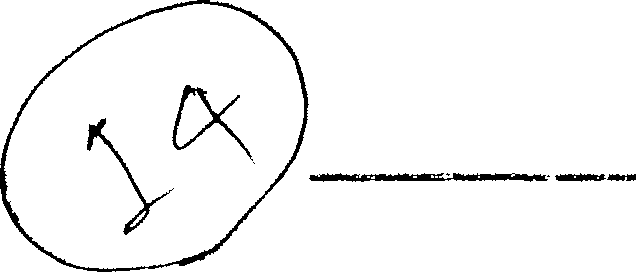
Organisational Change and Development Time : Three Hours Marks : 100
Instructions to Candidates- :
1) There,.are two sections.
2) Section I carries 60 marks and Section II carries 40 marks.
3) Th< re are (5 questions in Section I out of which any four are to be attempted.
4) The case study question in Section II is compulsory.
5 ' Figures tc the right indicate full marks.
6) Answers to the two sections should be written in one and the same answer book.
SECTION I
What are the various means by which change can be implemented ? 15 Ex; 'ain in detai:.
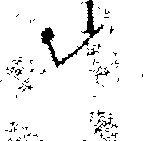
Why is organisational change often resit ted by individuals and groups ? 1G Suggest strategies to prevent such resistance.
3. Explain the concept of the quality of work life and its importance today. 15
WT at are the various considerations and action components of OD 15 pr; grammes ?
Discuss the various elements of the knowledge management process. 15
6. W iat are the skill:-; needed f or learning organisat ions.
15
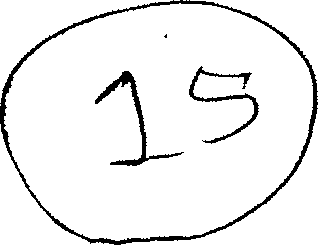
 |
|
"'I |

SECTION II
%
Read the giyen east1 and answer the questions that, follow :
Mr. She wale was recently promoted to the pos'; ofthe General Manager from his previous position of Manager of Corp< rate. Development. In his new posit on, he needed a bright manager to we as a deputy to assist in carrying his day to da> activities and coordinating marketing, manufacturing R & D and finance funct ns.
There were three candidates available who could be promoted U uhe position of Mr. Shewales deputy.
All three candidates ha<. exceptional academic background and successful careers with the co, ipany. Mr. Joshi was with the comj ny for 5 years. lie had an engineering degree with MBA from YOM (. ten University . He was real achiever. Mr. Joshi performed every assigned tasks quickly and efficiently. Pie was strategic thinker. He got a uig well with others. His performance was best, wherj he had total cor rol ofthe situation. Many critical tasks he preferred to do himself nd accomplished them in a much shorter time.
Mr. More, on the other hand, had no engineering or busir 3ss background but had been with company for 20 years. He was outgo .ng and enjoyed working with most key managers. His knowledge - of ;he corporate operations was a tremendous asset. Mr. More was. lot aggressive and in a difficult time in examming:crifcieatiy new. ideas t .nd proposals. He did not enjoy direct confrontation and disagreement with the rest ofthe managers.
. Mr. Pagare was the third candidate, who had recently joined ;he company. He had a Ph.D. in quantitative techniques and statistics f Dm the Pune University and had an engineering background. Iis performance on his previous job was exceptional as domonstrate< by rapid promotions and assignment of broader responsibilities. He 'as with the company only few mouths ago and hence no direct assosn- ;nt of capabilities was available except thac be seemed to get along well with others. He was somewhai reserved in staff meetings but show i a great understanding of underlying corporate issues.
Quest,ions :
a) Assume, that you are Mr. Shewalo, how would you select your 20 new deputy from the three candidates ?
b) If you conducted additional interview's with each candidate, v\ hat 20 questions would you as!: to assist in the decision making "nd coordinal ion process ?
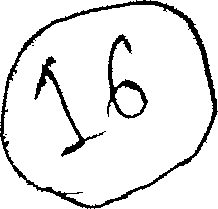
* Human Resource Planning
Time : Three Hours Marks : 100
Instructions to Candidates :
1) ' 'Tihere are two sections.
2) Section I cairies 60 marks and Section II carries 40 marks.
3) There are 6 questions in Section I out of which any four are to be attempted
4; Tha two case study questions in Section II are compulsory.
5) Figures to the right indicate full marks.
6) Answers to the two sections should be written in one and the same answer book.
lilgfc Explain the major characteristics of a sound policy. Discuss the different 15
t ypes of , Li police?;.
2. Define'HRP. Explain in detail, demand forecasting in HRP. 15
3. Explain the elements of an effective human resource planning. 15
4. Define pi od uctiv ity. Explain the technological approach to productivity. 15
5. What is job evaluation ? Explain the various methods of job evaluation. 15
6. Define employee selection. Discuss in detail, the steps involved in 15 cmplo-et selection
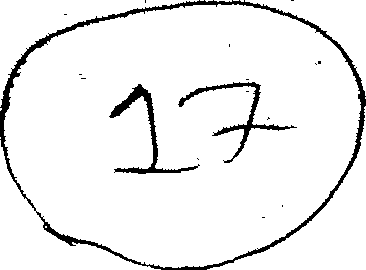
Mr. Sushant has been working as a manager (credit-appraisal)-in the State Bank of India since 1980. He got first rank in his M.A. from Andhra University in 1979. Herose from officer Grade IV to officer Grade I in a short span of 10 years. Personnel records of the bank show that he is an efficient manager in Agricv Itural credit, Industrial credit and credit to small business etc. The bank is planning to computerise the project appraisal department. In this connection, Mr. Sushant was asked to take training in computer operations. But he was quite reluctant to undergo training.
Question :
Why was Mr. Sushant reluctant to undergo training
20
8. ABC Ltd., Iluru, is producing electric bulbs, water coolers, air coders and refrigerators. Recently, it added a new line of production i.e., electric motors, both for domestic and agricultural purposes. It needs one electric engineer with B Tech to look after the new plant pr< du- ing electric motors. Presently, five electric engineers with B E. qualilica.ion are? working in the existing plant,as assistant engineei s. The uonij. my advertised for the post of a chief engineer (electrical) for its now pd-nt.
It received twelve applications, out which five are frjrn the exis mg plant. After conducting interview...tests andmediLal exaininat ion, the company finally selected My XYZ who was employoci in the exis; mg pla it of the company. He is fourth in tne seniority list of the as,s>V.s nit engineers in the present plam . Mr. XYZ joined as a chief engine-,v in the new plant, but three assistant engineers in the existing plant moved the.issue to the court of law contesting that the selection of)C\rZ d not valid as he is not the senior one among the assistant engineers m ohe existing plant.
1. What would be the management version in the case ? 10
2. Predict the court judgement regarding the issue. 10
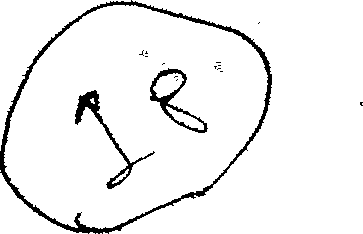
P09/HR2303/EE/20090527
Human Resource Development Time : Three Hours Marks : 100
Instructions to Candidates :
1) The-'e are two sections
2} Section I carries 60 marks and Section II carries 40 marks.
3) There are 6 questions in Section I out of which any four are to be atte:npted.
4) The two case study questions m Section II are compulsory,
5) Fig\ires to the right indicate full marks.
6) Answers to the two sections should be written in one and the same answer book.
SECTION I
1. DSjjjfeeribe riie I i. ID processes. Discuss the growth of HRD in the Indian 15 cJlttext.
<*-
2. Explain the HRD model. Discuss the principles observed in designing 15 the HRD system.
3. j, Explain the rationale behind HRD for workers. Discuss the various 15
V" goals of HRD.
4State th ' vr.rious lyoes of counselling. Describe the steps in the 15 counselli ug; process.
5. Explain the concept of employee training. Di? 'uss the various methods 15 of imparling training.
8. State the provisions of the Factories Act, 1948 with special reference to 15 the health and safety of workers.

Read the following two cases and answer the given questions:


TION II
7. Yash is fully convinced that the stenographer is a girl who gets p. d for learning how to spell while she is looking for a husband. Throughly dissatisfied with the stenos performance, Yash has now become cynical and frustrated.He never looses a single opportunity to accentual the negatives with the stenos behaviour and performance. He :s ea rer tc find fault, to look for even the slighest mistake and to point out how stupid his steno is. As a result, his steno has become more defe tsive.
Their relationships are strained and both of them are left with
uncomfortable feelings. Yashs way of dealing is al ways negat ive, be it a steno or any other person. He is knowa for turning off the people with whom he interacts. Seriously concern sd about this fact, Yash ha.1; done a lot of soul searching. As a result, he is doing an experiment of accentuating the positive instead of the negative in every enoo.nter.
To his surprise, people are responding fantastically to hi: new behaviour. Since then, Yash has tak'rn a decision to accentuate the positives in every situation that he encounters and to implement this decision consciousl} in his day-to-day life for better results. Wit ! this, he feels confident that he will improve his strained relationships in his working life.
Answer the following questions.
1. Analyse the case in brief. 5
2. What is the main problem in the case ? 10
3. Critically analyse the attitude of Mr. Yash. 5
8. Rajesh Electricals is a medium scale industry in the fast d ve;oping Ambad industrial estate. The work force in the organization i.as an Average age of 45 years, average service of 18 years and an average educational level of fifth I sixth standard. Due to eld technology, the company is facing financial problems and decided to go it r new technology and terminate workers. Most of the workers are well skilled n their own jobs, due to long experience. Some of them have approached die management with a proposal to resign provid ed their own son/ daughter should be employed by the company.
1. Analyse the case in brief. 5
2. What aspects should be considered by the managament before 15 taking a decision ?
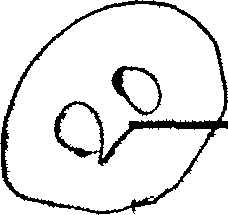
N-35
I
Managing Interpersonal and Group Processes j
I
Time : 7'hre Hours Marks : 100 Instructions t o Candidates :
1) There are two sections
2) [Section I carries 60 marks and Section II carries 40 marks.
3) There are 6 q uestions in Section I out of which any four are to be attempted.
4) The case 11 udy question in Section II is compulsory.
5) Figures to the right indicate full marks.
6) Answers co the two sections should be written in one-and the same answer book.
SECTION I
1. What are the stapes in the development of groups ?
15 15 15
15 15
15
2. Define organizational development. What ars its techniques ?
S.. Explain the principle barriers to communication and suggest measures for removing them.
4. Defr e creativity Explain the process of creativity.
5. How will an employee manage his relationship with his boss ?
6. Who ire stakeholders ? What are the reas ?ns why managers care about managing their relationships ?
Q
1 Indane Biscuits is located in ai? industrial area. The biscuits factory employs labour qn a daily basis. The management does not follow statutory regulations and is able to get away with violations by keeping the concerned inspectors in good books. The factory has a designated room to which employees are periodically called either to be hired or fired. As a part of National Safety Day, the Industries Association, of which the Indane Biscuits is a member, decided to celebrate collectively at a central place. Sah of the member was given specific tasks.
The personnel manager, Indane Biscuits, desired to consult his supervisors and to inform everybody through them about the ;mety day celebrations. He sent a memo requesting them to be present in the room meant for hiring and firing. As soon as the supervisors road the memo, they all got panicky, thinking that now it w as their turn to get fired- They started having hush-hush consultations. The workc -s also learnt about it and since they had a lot of scores to settle with the management, they extended their sympathy aid support to the supervisors. As a consequence, everybody struck work and the fac-.ory came to a grinding halt. In the meantime, the persono ?A manager was unaware of the developments and when he came to know about tkom, he went immediately and tried to convince the supervisors abuu! the pu. pose of inviting them and i he reason why that pai ricular room was chosen. The personnel manager had selected the room because no other roc m was available, but the .supervisors and the workers were in no mood to listen. The Managing Director, who rushed to the factory on hearing about the strike, also couldnt convince the w irkers.
The matter was referred to the labour.department. The enquiry resulted in all the irregularities of the factory getting exposed and imposition of heavy penalties. The personnel manager was sacked. The factory re-opened after prolonged negotations and settlements.
Questions:
La* In the case of Indane Biscuits, bring out the in portance of and credibility in communication.
Listout the direct and indirect causes for the escalation of at Indane Biscuits.
(jiX If you were the personnel manager, what woukL-mi do '

is
Performance and Reward Management Time : Three Honrs Marks : 100
Instruction* to Candidates :
1) There are two sections.
2) Section I carries 60 marks and Section II carries 40 marks.
3) There are 6 question;; in Section I out of which any four are to be attempted.
4) The case study question in Section II is compulsory.
5) Figures to the right indicate ful marks.
6) Answers to the two sections should be written in one and the satrie / answer book.
Ws--- "
.. 1. Expfein th ' term Performance Management and describe the various 15 furtilfonal areas of performance management.
2. What is performance appraisal ? Describe the various objectives of 15 performance appraisal.

What i s executive or management development ? Describe its various 15 methods.
5. What is brainstorming ? Describe its advantages and limitations. 15
6. What is tea m building ? Describe its various elements. 15
< P.T.O)
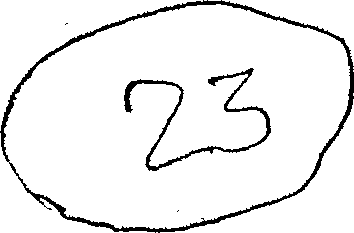
P09/HR 2307/E E/20090529 : 1
After working for years as a farmer, Mallva entered the in - irance business. His driving goals were to help people survive their tmighest times and to provide assistance that could ease difficult situations. Working for someone else, he wanted to fulfill a second pa, ;ion of developing people, but he felt constrained by organisational olicies and politics. Finally, he took the plunge and went out on h * own, forming Mallva and Company in the early lMOs.
As a small insurance broker, Mallya realized that succes.'- rested on being different, from his competitors. Mallya had to develop an organisational vision and mission that made his company unique : Commitment to the highest standards of service and integrity, an organization that embraces professionalism, integrity and competency. Still, mission statement alone wont achieve these goals. This is possible only through the outstanding efforts of a team of highly organised employees under the leadership of a concerned, dedicated, conm amity-driven leader.
Over the past several years, Mallya and Com pany has hinit. a team of employees who- not only embrace the companys mission, but practice it regularly..The companys ovitside-sales associates -and-internal administrative people work in concert to deliver excellent nor-, ice. It, has not gone unnoticad. For their efforts, the company has achieved a level of community recognition second to none, and with that, th fruits ofsuccess.
Many organisations are successful and profitable, bin what happens to these profits sometimes makes a difference. Clearly, Mallya had every right simply to pocket every rupee. After all, he has had the jurden of the past several years and he is responsible if anything should go wrong. But that is not what Mallya wanted. Instead, he recognized that, sharing with his employees was not only good, it was right. Through their team efforts, the firm reached this point and positioned itself for the future. Accordingly, treating them to a special recognition luncheon in their honour, closing the company down for a team party, and awarding each employee with a surprise holiday bonus cheque as well as making a match to the companys 401 K including a separate 401 K bonus was the least Mallya decided he could do.
39

P09/HR2307/EE/20090529 : 2
\jirf' How would you describe the compensation programme at Mallya 10 and Company?
M5j What tffect. do you beli e ve the compensation programme at Mallya 15 and Company is hr.ving on the employees! of the organization ? Expla;a >our position.
mm
Do you believe tiiat an ethical pay practice ca.i motivate 1.5 employees ? Defend your answer.


t
P09/HR2309/E E/20090530
Management of Training and Development
Time : Three Hours
Marks : 100
Instruct ions to Candidates :
1) There are two sections.
2) Section I carries 60 marks and Section II carries 40 marks.
3) There are 6 questions in Section I out of which any four are to be attempted. ' .
4) The case study question in Section II is compulsory.
5) Figures to the righ. indicate full marks.
6) Answers to the two sections should be written in one and the same answer book.
1. Describe < he different types of charts and graphs which are us ad as 15 teaching ;uds.
2* Describe the process >of communication. Explain in brief, communication 15
failure.
3. Explain the four levels of evaluation according to the Kirpatrick model. 15 A How are learning objectives classified brsed upon the learner 15

participation ? Describe each level.
5. Explain the various meta theories of learning.
15
6. , Write an essay on vestibule training.
15

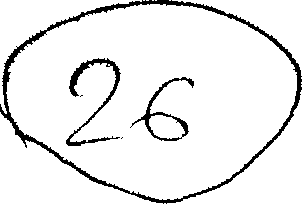
(P.T.O)
I*
Rames'h has eight years of hands on experience in various .shops as a set up person. He has recently secured a diploma in engineering. Because of his excellent performance, all round shop knowledge processes and general popularity, he hat- been promoted tc the supervisors cadre in the assembly shop. Today, Ramesh faced a .-.ituation for which his shop expertise has not prepared him. As he walked along the assembly bay, he watched each operation carefully. He chatted with the employees and generally familiarised him.self with the series of sub-assemblies. It was then that one particular operation caught hi: pointed attention. The point at which a sub-assembly was oeing join, d to the final assembly was going very slow The assembler, Girisn was i relatively new employee. Lack of training-and experience caused him to lift the twin sub-assembly parts slower than the others, he would drop the bearing housing and damage the edges. Thus, there was, a lot of rework and considerable delay in the final assembly. This upset the planning cycle entirely.
Assessing the situation, Ramesh walked to Gir:sh and a sked him to take a short coffee break before he resumed hi:s work. Ram fsh soon caught up with the rest of the assembly lines and made up fo- the lost i time; Girish went to the records room where the employes usu.Jly meet during their coffee break. But he soon got lost in acquainting himself with his new eolaagues, thus taking a much longer time tha " Ramesh had anticipated.
Just then Venu the manager, rushed across the shop floor towards Ramesh and said, I have been looking all over for you. We ha . e a rush order. What are you doing here ? I am straightening out a bottleneck in the line. The operator is new and Ras not learnt how to do the job right or fast enough.
Where is the operator ? asked Venu. He went for a sh rt coffee break, a few minutes ago, said Ramesh. I have been looking (or you for half an hour said Venu. He must have gone longer than that. At that moment Girish returned. Its about time you come back, roared Venu, Its bad enough you cant do the job right without taking half the afternoon off. Girish looked at Ramesh who said nothing. Venu called Ramesh aside and said, If he cant do his job, get rid of him. Weve got better things for you to do than covering up for an incompetent; employee. Questions :

XjsX' Analyse the case in detail.
15
10
15
\J&Y Suggest a suitable title to the case.
Find out the main issues in the case.
N - 41


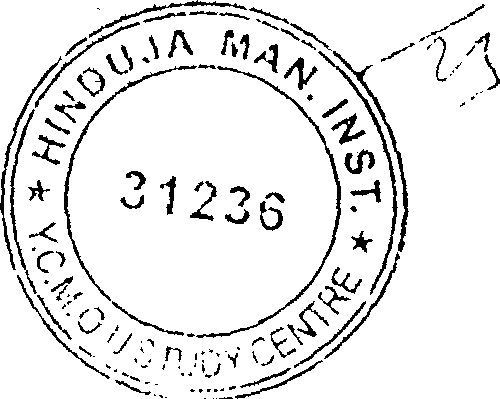
Management. ol Training and Development
Time-: Three Hours
Marks : J >0
Instructions to Candidates
1) There are two sections. 1
i
2) Section I carries (>0 marks and Section II carries 40 marks. i
3) There are six questions in Section I out of which any four are to be . attempted.
4) In Section II, the Case Study questions are compulsory.
5) Figures to the right indicate full marks.
6) Answers to the two sections should be written in one and the same answer book.
SECTION I
if '1: Explain the methods of learning in detail.
15
15
Explain the methods of training.

k# *3. Write an essay about the various meta-theories of learning.
15
15
4. Describe the various alternatives of training and development.
5. What are the different types of communication-Describe each type 15 briefly.
6. Elaborate the Kirpatrick model of evaluation.
15
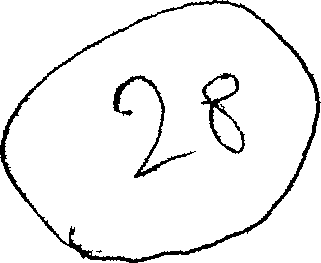
O
A
7, Read the given case and answer the questions th;u fo;!ov?.
Mr. Naveen has been working as a Manager (Credit Appraisa.J in the State Bank of India since 1970. He got a first rank in his M.A from! the Andhra University in 1969. He rose from Officer Grade IV to Officer (trade I in a short span of 10 years. Personnel records of the bank show that he is an efTic'ant manager in agricultural credit, industrial credit and credit to small business etc. The bunk is planning to computerise the project appraisal department. In this connection.
Mr. iNaveen was asked to take training in Computer Operations. But he vyas quite reluctant to undergo the training.
Questions :
| " '
a) Analyse the case.. v
b) Why was Mr. Naveen r6lu :tant to undergo training ?
8. Mr. Vijay joined the S. C. Railway five years tack when he wa.:
21 years old. He proved himself as an efficient steam engine driver lie'bagged the Railway Minist< rs Best Drivers Award this year. H. was asked to undergo training in diesel engine driving due to massiv..-dieselisation in the South Ccn ral Railways. But he was reluctant- C take up training. The Head of the lq.co staff was quite surprisec t; know the reluctance of Mr. Vijay when a lumber of drivers of stean; engines have volunteered the nselves to undergo training in diesoi engine driving.
Questions :
a) Analyse the case.
b) Identify the psychological problems in the cF.se. 15
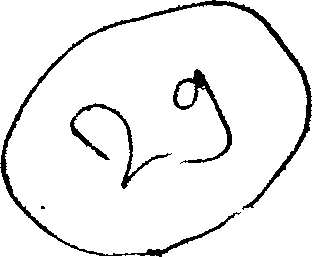
N-J583 P09/HR2309/EE/2008.11 2 20.1.0
|
Attachment: |
| Earning: Approval pending. |
